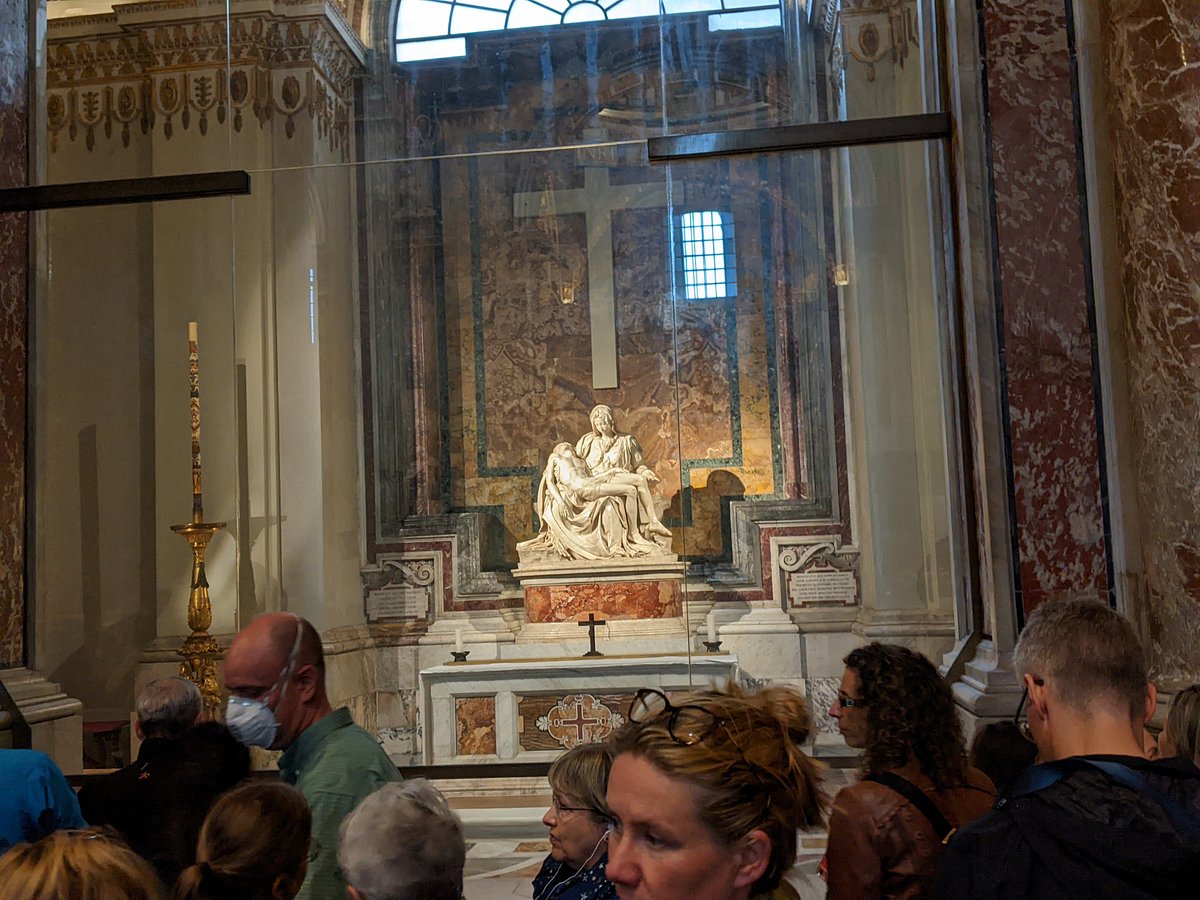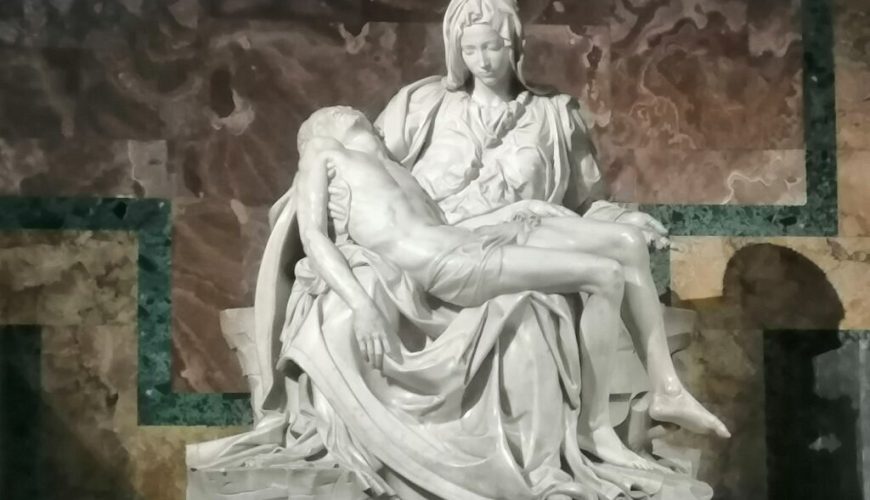La Pietà is a masterpiece of Renaissance sculpture created by Michelangelo Buonarroti, housed within St. Peter’s Basilica in Vatican City. This exquisite sculpture is renowned worldwide for its emotional intensity, technical skill, and profound spiritual resonance.
Within the hallowed halls of St. Peter’s Basilica lies a statue that has captivated hearts for centuries – Michelangelo’s La Pietà (The Pieta). This breathtaking sculpture, a poignant depiction of the Virgin Mary cradling the dead body of Jesus Christ, is not just a work of art; it’s a testament to the sculptor’s genius and a deeply moving exploration of grief and faith.
La Pieta Historical Context

Michelangelo sculpted “La Pieta” between 1498 and 1499 when he was only 24 years old. It was commissioned by French Cardinal Jean de Bilhères for his own funeral monument but was placed in its current location in St. Peter’s Basilica by Pope Clement VIII in the late 16th century. The sculpture depicts the body of Jesus Christ in the arms of his mother Mary after the Crucifixion.
La Pieta Artistic Design

Michelangelo’s La Pietà is a masterpiece of Renaissance sculpture. The smooth, flawless finish of the Carrara marble creates a lifelike quality to the figures. Mary’s youthful beauty and serene expression contrast with the lifeless form of Jesus, creating a powerful tension. The intricate details of the drapery and the gentle way Mary holds Jesus’ body showcase Michelangelo’s exceptional skill in capturing both form and emotion in stone.
Composition
La Pieta is notable for its delicate and harmonious composition. Mary’s youthful figure cradles the lifeless body of Jesus across her lap, conveying a sense of profound grief and maternal tenderness. Despite the intimate embrace, Michelangelo achieved a sense of monumental grandeur through the proportions and positioning of the figures.
Detail and Realism
Michelangelo’s exceptional skill is evident in the lifelike rendering of the figures. Mary’s face reflects a mix of sorrow and serenity, while Jesus’ body bears the wounds of his Crucifixion, rendered with meticulous detail. The contrast between Mary’s smooth skin and Jesus’ muscular form emphasizes their respective roles in the narrative of redemption.
Symbolism and Interpretation

Spiritual Depth
La Pieta is not merely a work of art but a profound meditation on the themes of suffering, sacrifice, and redemption central to Christian theology. Mary’s sorrowful expression and her tender embrace of Jesus evoke empathy and contemplation among viewers, inviting them to reflect on the spiritual significance of Christ’s sacrifice and Mary’s role as the Mother of Sorrows.
Iconography
The sculpture adheres to traditional iconography in Christian art, where Mary, often depicted as the “Pieta” (Italian for “pity” or “compassion”), mourns the death of her son. Michelangelo’s interpretation, however, imbues the scene with a humanistic and emotional intensity that transcends mere representation.
Legacy and Impact
La Pieta stands as a testament to Michelangelo’s genius and artistic vision. It represents a pinnacle of Renaissance sculpture, admired for its technical mastery, emotional depth, and spiritual resonance. The sculpture continues to inspire awe and reverence among visitors to St. Peter’s Basilica, serving as a poignant reminder of the Christian faith’s core beliefs and the enduring power of artistic expression.
Sadly, La Pietà has been a target of vandalism. In 1972, a mentally disturbed man attacked the sculpture with a hammer, causing significant damage. Since then, La Pietà has been encased in bulletproof glass for protection. This incident serves as a stark reminder of the vulnerability of art and the importance of preserving cultural treasures.
A Story Etched in Stone
La Pietà isn’t just a beautiful sculpture; it tells a story. The Virgin Mary’s youthful appearance symbolizes her eternal purity, while the lifelessness of Jesus poignantly portrays the human cost of sacrifice. The composition, with Mary cradling Jesus close to her, evokes a sense of maternal love and grief that resonates with viewers across cultures and religions.
La Pieta is not just a sculpture but a profound statement on the intersection of faith, art, and humanity. Its timeless beauty and emotional power continue to captivate and inspire viewers, making it one of the most cherished and admired works of art in the world, housed within the spiritual heart of Vatican City.
La Pietà is a highlight of any visit to St. Peter’s Basilica. Even with the protective barrier, the sculpture’s beauty and emotional power shine through. Standing before this masterpiece allows you to appreciate Michelangelo’s genius, contemplate the universal themes of grief and compassion, and experience a work of art that continues to inspire awe centuries after its creation.
Plan Your Visit
St. Peter’s Basilica offers free admission, but expect crowds. Consider exploring the basilica during off-peak hours for a more tranquil experience with La Pietà.
A Timeless Legacy
Michelangelo’s La Pietà is more than just a sculpture; it’s a cultural icon. Its enduring popularity is a testament to the artist’s ability to capture the essence of human emotion in a timeless masterpiece. So, next time you find yourself in Vatican City, don’t miss the chance to witness La Pietà and experience the beauty and power of art that transcends time.





0 Comment